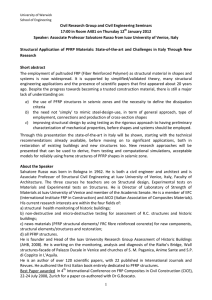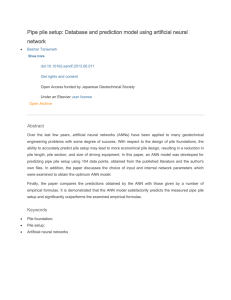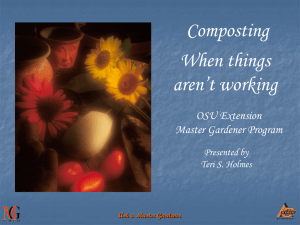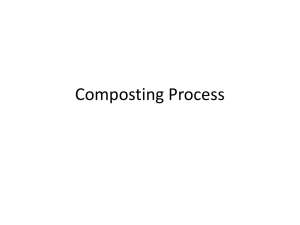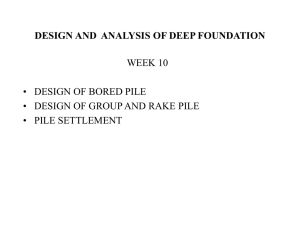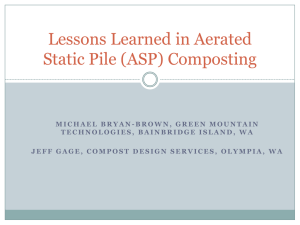132-061911_operation.. - US Composting Council
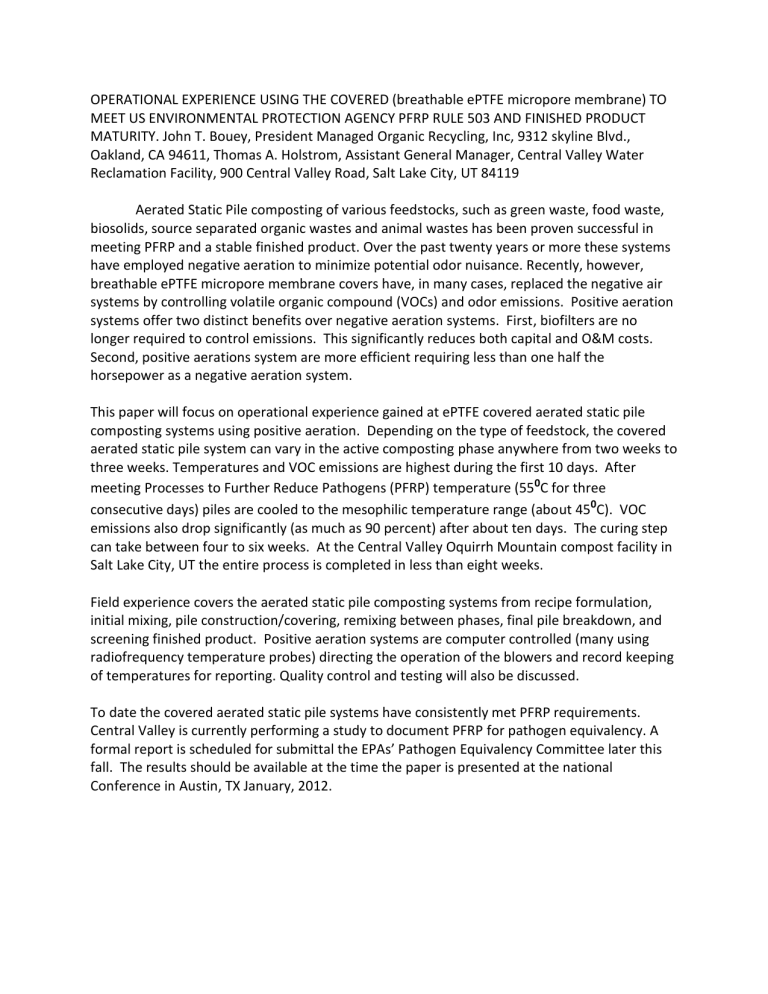
OPERATIONAL EXPERIENCE USING THE COVERED (breathable ePTFE micropore membrane) TO
MEET US ENVIRONMENTAL PROTECTION AGENCY PFRP RULE 503 AND FINISHED PRODUCT
MATURITY. John T. Bouey, President Managed Organic Recycling, Inc, 9312 skyline Blvd.,
Oakland, CA 94611, Thomas A. Holstrom, Assistant General Manager, Central Valley Water
Reclamation Facility, 900 Central Valley Road, Salt Lake City, UT 84119
Aerated Static Pile composting of various feedstocks, such as green waste, food waste, biosolids, source separated organic wastes and animal wastes has been proven successful in meeting PFRP and a stable finished product. Over the past twenty years or more these systems have employed negative aeration to minimize potential odor nuisance. Recently, however, breathable ePTFE micropore membrane covers have, in many cases, replaced the negative air systems by controlling volatile organic compound (VOCs) and odor emissions. Positive aeration systems offer two distinct benefits over negative aeration systems. First, biofilters are no longer required to control emissions. This significantly reduces both capital and O&M costs.
Second, positive aerations system are more efficient requiring less than one half the horsepower as a negative aeration system.
This paper will focus on operational experience gained at ePTFE covered aerated static pile composting systems using positive aeration. Depending on the type of feedstock, the covered aerated static pile system can vary in the active composting phase anywhere from two weeks to three weeks. Temperatures and VOC emissions are highest during the first 10 days. After meeting Processes to Further Reduce Pathogens (PFRP) temperature (55
0
C for three consecutive days) piles are cooled to the mesophilic temperature range (about 45
0
C). VOC emissions also drop significantly (as much as 90 percent) after about ten days. The curing step can take between four to six weeks. At the Central Valley Oquirrh Mountain compost facility in
Salt Lake City, UT the entire process is completed in less than eight weeks.
Field experience covers the aerated static pile composting systems from recipe formulation, initial mixing, pile construction/covering, remixing between phases, final pile breakdown, and screening finished product. Positive aeration systems are computer controlled (many using radiofrequency temperature probes) directing the operation of the blowers and record keeping of temperatures for reporting. Quality control and testing will also be discussed.
To date the covered aerated static pile systems have consistently met PFRP requirements.
Central Valley is currently performing a study to document PFRP for pathogen equivalency. A formal report is scheduled for submittal the EPAs’ Pathogen Equivalency Committee later this fall. The results should be available at the time the paper is presented at the national
Conference in Austin, TX January, 2012.


